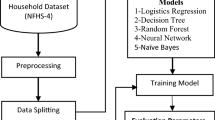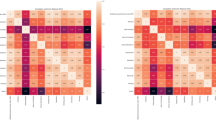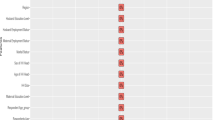Abstract
Nearly one in five families in the country was poor in 2012, according to the Philippine Statistics Authority. While this proportion is lower than the corresponding figures from 2006 and 2009, the absolute number of poor families has actually grown from 3.8 million in 2006 to 4.2 million in 2012 due to the increase in population. Using data samples that have been collected from 69,130 households through a comprehensive community-based monitoring survey conducted in one of the cities that comprise Metro Manila, we attempt to identify the characteristics that differentiate between poor and non-poor households. Using back-propagation neural networks, we are able to correctly predict 73% of the poor households and 60% of the non-poor households. Moreover, the rules extracted from one of these networks provide concise description of how households are classified as poor based on their demographic characteristics and information pertaining to their surrounding living conditions.

Similar content being viewed by others
References
Achia TBO, Wangombe A, Khadioli N (2010) A logistic regression model to identify key determinants of poverty using demographic and health survey data. Eur J Soc Sci 13(1):38–45
Adeli H (2001) Neural networks in civil engineering. Comput-Aided Civil Infrastruct Eng 16(2):126–142
Alem Y, Köhlin G, Stage J (2013) The persistence of subjective poverty in urban Ethiopia. World Dev 56:51–61
Ansoms A, McKay A (2010) A quantitative analysis of poverty and livelihood profiles: the case of rural Rwanda. Food Policy 35:584–598
Babu SC, Sanyal P (2009) Food security, poverty and nutrition policy analysis: statistical methods and applications. Academic Press, Burlington
Belhadj B (2011) New fuzzy indices of poverty by distinguishing three levels of poverty. Res Econ 65:221–231
Benson T, Chamberlin J, Rhinehart I (2005) An investigation of the spatial determinants of the local prevalence of poverty in rural Malawi. Food Policy 30:532–550
Bigman D, Srinivasan PV (2002) Geographical targeting of poverty alleviation programs: methodology and applications in rural India. J Policy Model 24:237–255
Chapoto A, Kirimi L, Kadilaya S (2012) Poverty and prime-age mortality in eastern and southern Africa: evidence from Zambia and Kenya. World Dev 40(9):1839–1853
Dennis JE Jr, Schnabel RE (1983) Numerical methods for unconstrained optimization and nonlinear equations. Prentice Halls, Englewood Cliffs
Duy VQ, D’Haese M, Lemba J, Hau LL, D’Haese L (2011) Determinants of household access to formal credit in the rural areas of the Mekong delta, Vietnam. Afr Asian Stud 11:261–287
Erguzel TT, Sayar GH, Tarhan N (2016) Artificial intelligence approach to classify unipolar and bipolar depressive disorders. Neural Comput Appl 27(6):1607–1616
Fernández-Gámez MA, Gil-Corral AM, Galán-Valdivieso F (2016) Corporate reputation and market value: evidence with generalized regression neural networks. Expert Syst Appl 46:69–76
Gounder R, Xing Z (2012) Impact of education and health on poverty reduction: monetary and non-monetary evidence from Fiji. Econ Model 29:787–794
Haykin S (1999) Neural networks: a comprehensive foundation, 2nd edn. Prentice Hall, Englewood Cliffs
Hoogeveen JG (2005) Measuring welfare for small but vulnerable groups: poverty and disability in Uganda. J Afr Econ 14(4):603–631
Huang W, Lai KK, Nakamori Y, Wang S (2004) Forecasting foreign exchange rates with artificial neural networks: a review. Int J Inf Technol Decis Mak 03(1):145–165
Jha GK, Kanchan S (2014) Time-delay neural networks for time series prediction: an application to the monthly wholesale price of oilseeds in India. Neural Comput Appl 24(3):563–571
Kalogirou SA (2001) Artificial neural networks in renewable energy systems applications: a review. Renew Sustain Energy Rev 5(4):373–401
Kiakojoori S, Khorasani K (2016) Dynamic neural networks for gas turbine engine degradation, health monitoring and prognosis. Neural Comput Appl 27(8):2157–2192
Lin S-M (2013) Analysis of service satisfaction in web auction logistics service using a combination of Fruit fly optimization algorithm and general regression neural network. Neural Comput Appl 22(3):783–791
Lisboa PJG (2002) A review of evidence of health benefit from artificial neural networks in medical intervention. Neural Netw 15(1):11–39
Lisboa PJ, Taktak AFG (2006) The use of artificial neural networks in decision support in cancer: a systematic review. Neural Netw 19(4):408–415
Liu H, Tan ST (1995) X2R: a fast rule generator. In: Proceedings of IEEE international conference on systems, man and cybernetics, pp 1631–1635
Maharjan KL, Joshi NP (2011) Determinants of household food security in Nepal: a binary logistic regression analysis. J Mt Sci 8:403–413
Maier HG, Dandy GC (2000) Neural networks for the prediction and forecasting of water resources variables: a review of modelling issues and applications. Environ Model Softw 15(1):101–124
Mitra S (2013) Early warning prediction system for high inflation: an elitist neuro-genetic network model for the Indian economy. Neural Comput Appl 22(S1):447–462
Neff D (2013) Fuzzy set theoretic applications in poverty research. Policy Soc 32:319–331
Paliwal M, Kumar UA (2009) Neural networks and statistical techniques: a review of applications. Expert Syst Appl 36:2–17
Pany PK, Ghoshal SP (2015) Dynamic electricity price forecasting using local linear wavelet neural network. Neural Comput Appl 26(8):2039–2047
Ravallion M (1998) Poverty lines in theory and practice. Living Standard measurement study working paper no. 133. World Bank, Washington DC
Senf C, Lakes T (2012) Comparing support vector regression and statistical linear regression for predicting poverty incidence in Vietnam. In: Bridging the geographic information sciences, lecture notes in geoinformation and cartography, pp 251–265
Setiono R (1997) A penalty-function approach for pruning feedforward neural networks. Neural Comput 9(1):185–204
Setiono R, Liu H (1996) Symbolic representation of neural networks. IEEE Comput 29(3):71–77
Sy I (2013) The subjective approach as a tool for understanding: The case of Senegal. Proc Econ Financ 5:336–345
Vellido V, Lisboa PJG, Vaughn J (1999) Neural networks in business: a survey of applications. Expert Syst Appl 17(1):51–70
Woolard I, Klasen S (2005) Determinants of income mobility and poverty dynamics in South Africa. J Dev Stud 41(5):865–897
Yaseen ZM, El-Shafie A, Afan HA, Hameed M (2016) RBFNN versus FFNN for daily river flow forecasting at Johor River, Malaysia. Neural Comput Appl 27(6):1533–1542
Yazici B, Memmedli M, Aslanargun A, Sama S (2010) Analysis of international debt problem using artificial neural networks and statistical methods. Neural Comput Appl 19(8):1207–1216
Zhang Z, Friedrich K (2003) Artificial neural networks applications to polymer composites: a review. Compos Sci Technol 63(14):2029–2044
Acknowledgements
The authors wish to thank the Angelo King Institute (AKI) of De La Salle University, under whom the CBMS project is lodged, for sharing the raw survey data from Pasay City.
Author information
Authors and Affiliations
Corresponding author
Ethics declarations
Conflicts of interest
The authors declare that they have no conflict of interest.
Appendix
Appendix
List of variables included in the study to distinguish between poor and non-poor households.
Group 1: Demographic information of the head of the household
-
1.
Gender: 1 \(=\) male, 0 \(=\) otherwise.
-
2.
Age: continuous.
-
3.
Civil status: single, legally married, widowed, separated, common law marriage, unknown.
-
4.
Religion: 1 \(=\) Roman Catholic, 2 \(=\) Protestant, 3 \(=\) local non-Catholic church, 4 \(=\) local Catholic-rite church, 5 \(=\) Islam, 6 \(=\) others, 7 \(=\) no religion, 8 \(=\) unknown.
-
5.
Education: 1 \(=\) elementary school, 2 \(=\) secondary school, 3 \(=\) post-secondary, 4 \(=\) college graduate, 5 \(=\) post-graduate.
-
6.
Literacy: 1 \(=\) literate, 0 \(=\) otherwise.
-
7.
Job: 1 \(=\) currently employed, 0 \(=\) otherwise.
-
8.
Phil Health: 1 \(=\) member of Philippine Health, 0 \(=\) otherwise.
Group 2: Other information about the household
-
1.
Foreign worker in family: 1 \(=\) at least one member of the family is currently working overseas, 0 \(=\) otherwise.
-
2.
Single parent: 1 \(=\) single parent, \(=\) 0 otherwise.
-
3.
Board passer: 1 \(=\) if there is a board exam passer in the family (e.g., nurse, engineering, architecture), 0 \(=\) otherwise.
-
4.
Disable: 1 \(=\) if there is a disable family member, 0 \(=\) otherwise.
-
5.
Death-indicator: 1 \(=\) if there was a death in the family in the past year, 0 \(=\) otherwise.
-
6.
Calamity-indicator: 1 \(=\) if the family experienced a calamity (e.g., typhoon) in the past year, 0 \(=\) otherwise.
-
7.
FoodShortage-indicator: 1 \(=\) the family experienced hunger in the past year, 0 \(=\) otherwise.
-
8.
Garbage: 1 \(=\) if there is an organized (city, town, subdivision) garbage collection, 0 \(=\) otherwise.
Group 3: Access to water source (binary variable)
-
1.
Community water system—own use
-
2.
Community water system—shared with other households
-
3.
Artesian deep well—own use
-
4.
Artesian deep well—shared with other households
-
5.
Artesian shallow well—own use
-
6.
Artesian shallow well—shared with other households
-
7.
Dug/shallow well—own use
-
8.
Dug/shallow well—shared with other households
-
9.
River, stream, lake, spring and other bodies of water
-
10.
Bottled water/purified/distilled water
-
11.
Tanker truck/peddler
-
12.
Others
Group 4: Access to water distribution (binary variable)
-
1.
Unknown
-
2.
Within premises
-
3.
Outside premises but 250 m or less
-
4.
Outside premises 251 m or more
-
5.
don’t know
Group 5: Access to toilet (binary variable)
-
1.
Water sealed flush to sewerage system/septic tank—own use
-
2.
Water sealed flush to sewerage system/septic tank—shared with other households
-
3.
Closed pit
-
4.
Open pit
-
5.
No toilet
-
6.
Others
Group 6: Dwelling wall (binary variable)
-
1.
Strong materials
-
2.
Light materials
-
3.
Salvaged/makeshift materials
-
4.
Mixed but predominantly strong materials
-
5.
Mixed but predominantly light materials
-
6.
Mixed but predominantly salvaged materials
Group 7: Dwelling roof (binary variable)
-
1.
Strong materials
-
2.
Light materials
-
3.
Salvaged/makeshift materials
-
4.
Mixed but predominantly strong materials
-
5.
Mixed but predominantly light materials
-
6.
Mixed but predominantly salvaged materials
Rights and permissions
About this article
Cite this article
Azcarraga, A., Setiono, R. Neural network rule extraction for gaining insight into the characteristics of poverty. Neural Comput & Applic 30, 2795–2806 (2018). https://doi.org/10.1007/s00521-017-2889-8
Received:
Accepted:
Published:
Issue Date:
DOI: https://doi.org/10.1007/s00521-017-2889-8




